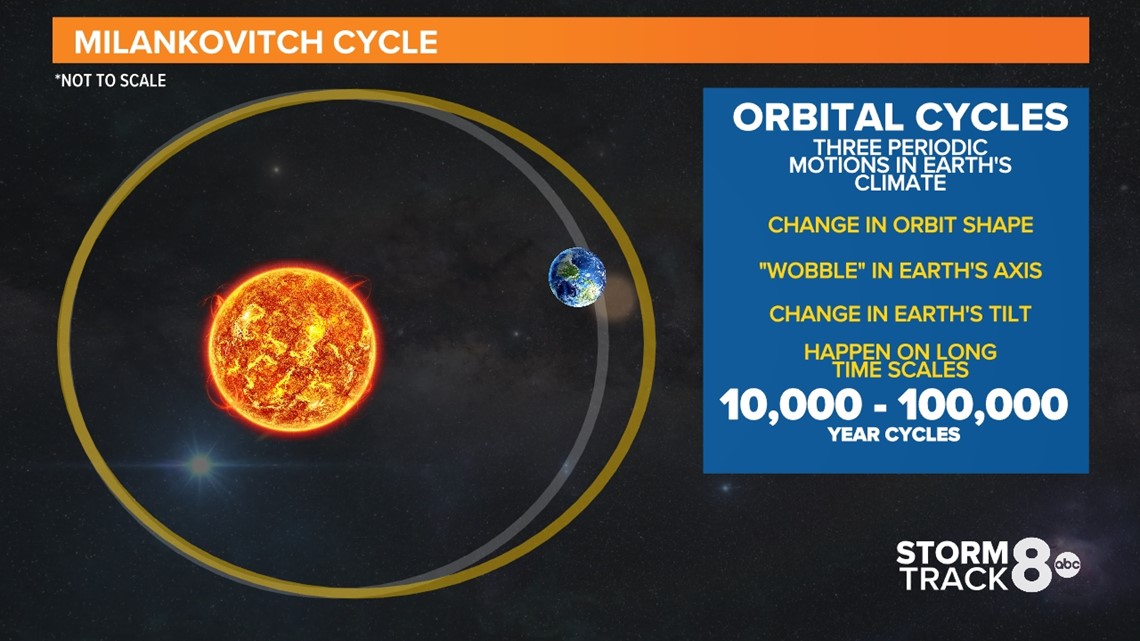MOLINE, Ill. — It was in the 1920s that a Serbian geophysicist, Mulitin Milanković, theorized that variations in Earth's tilt and wobbling about its axis impact the amount of energy being received from the sun, changing the planet's climate over time. Could this possibly explain why the Earth's current climate is changing? Let's dig in.
When talking about global warming or climate change, why isn’t the Milankovitch Cycle considered?
First, let's break down what the Milankovitch Cycles are. Each cycle deals with how the Earth orbits with respect to the sun. These cycles include:
Orbital Cycles: These contribute a predictable amount of change to Earth's climate over very large time frames on the order of 10,000+ years.
Changes in Eccentricity (Orbit Shape): These are 100,000+ year cycles as Earth's orbit shape varies over time. It is not a perfect circle.


Axial Precession (Wobble): These are 26,000+ year cycles. The Earth wobbles as it rotates on its axis because weight is not evenly distributed across the surface of the globe. It is not perfectly centered.
Changes in Tilt: These are 41,000+ year cycles. Earth's tilt changes ever so slightly over a long period of time, back and forth.


Given all of the above factors, why can't we directly relate the cycles to Earth's current warming trend?
For one, the timescales are completely different. Notice that the smallest cycle above has a timescale of 10,000 years, with one even as long as 100,000 years. Earth's current warming has taken place over much smaller timescales, tens to hundreds of years.
NASA satellite observations have also been able to confirm that these Milankovitch Cycles have not impacted the amount of solar energy absorbed by Earth in any meaningful way. Actually, these satellite observations have shown that in just the last 40 years, incoming energy from the sun has actually decreased a small amount.
Also, consider that these cycles are just one part of a very complex and complicated system that involves several moving parts. They are just one of the many favors that have contributed to climate change in the past and in the future.
Lastly, the earth is currently in a period of milder climate, between Ice Ages. If there were no human influences on climate, Earth's current orbital positions within the Milankovitch cycles predict our planet should be cooling, not warming. This is a cooling trend that began more than 6,000 years ago according to recent research.
All of this points to the rapid warming of Earth's climate due to human activities happening in addition to the very slow changes to climate caused by these Milankovitch Cycles.
Have a question that you would like me to answer for a future Ask Andrew segment? Submit it, here.

